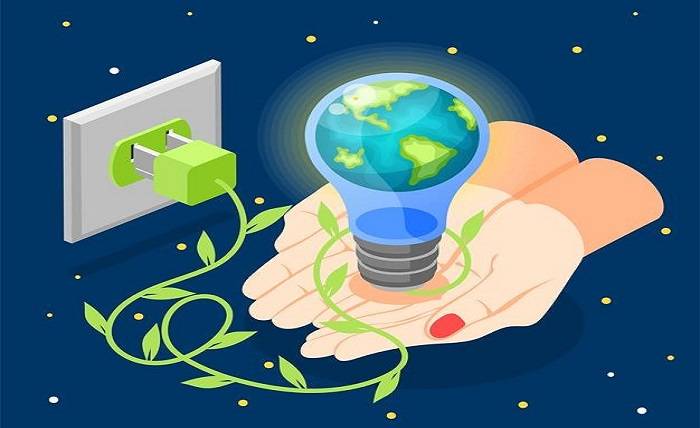How to Reduce Energy Use in Commercial Environments

The commercial sector includes buildings such as malls, restaurants, hospitals, schools, government offices, and banks. Offices and retail are the biggest consumers of energy due to their daily operations. Managing energy consumption is therefore very important to ensure that a business runs efficiently and cost-effectively.
Companies don’t want their names to be associated with energy-sucking practices. The smartest businesses and companies are always on the lookout for smart solutions to reduce their energy consumption and impacts on the environment. With minimal changes to their existing business setup, they plan to cut down their energy costs. New-age energy management systems can therefore generate energy savings of up to 15% and often pay for themselves in under three years by combining them with other green technologies. Visit The Site: atozmp3.ws
-
Utilize smart building technology
Your energy conservation strategy should include the use of the latest controls and programmable thermostats. Why not turn off or reduce the heating, air conditioning, and lighting when a building is not being used? Using smart building controls eliminates the human tendency to forget to turn off or lower the lighting and HVAC system settings.
-
Insulation
Another easy and relatively inexpensive way to save energy is to add insulation. Insulating and sealing your building can save you 10-percent on your energy bill, according to the EPA. By improving and reinforcing their insulation, businesses can reduce their energy costs while improving their efficiency.
Embedding insulation materials in the outer layer of the building is a great way to decrease the amount of heat and cooling required. In addition, sealing existing windows and doors from air leaks is another important step. Ensure that HVAC ducts, pipes, and outlets are sealed too. Click here magazinevibes Visit here theedgesearch Touch here thenewsinsider Visit this website soap2day Learn more about healthworldnews
-
Reduce your fossil fuels consumption
Drip irrigation, solar street lamps, and solar panels on the roof are just some of the simple measures you can use to reduce energy consumption within your building or premises.
By implementing waste management plants, water treatment plants, and water harvesting systems, businesses can satisfy their energy and resource requirements and use the energy generated within the building to meet their needs.
It is important for businesses to use free sources of energy to produce electricity, such as sunlight, wind, and water, rather than depend on fossil fuels.
-
Use energy-efficient lighting
After heating and cooling, lighting accounts for a significant amount of energy consumption. Therefore, energy cost reduction can be achieved by using energy-efficient lighting. Utilizing occupancy sensors to activate the lights only when the room is occupied is one way you can do that.
Moreover, replace obsolete exit signs with LEDs that will provide a high level of efficiency. The long service life of LED exit signs ensures that they work 24 hours a day.
-
Replace incandescent lights
Change incandescent light bulbs to compact fluorescent lighting (CFL) and high-intensity discharge (HID) lighting. They use less energy, last longer, are more energy-efficient, and produce less heat, so they reduce the load on the HVAC system.
-
Encourage employees to turn off idle equipment
Energy usage at workplaces accounts for 50 percent of the country’s total. It makes sense to educate employees about the importance of turning off equipment and lights. Educate them about the importance of conserving energy.
You should make sure all employees turn off everything, such as copiers and task lights, when they are not in use. Ask the cleaning staff or security guards to turn off equipment and lights, such as kitchen equipment, coffee pots, and individual office lights.
-
Building design
In order to reduce energy costs, general cooling measures and “green” building designs are helpful. Some of these measures include:
- The use of natural lighting and opening interior spaces to daylight.
- Providing shade and reducing local temperatures through landscaping and trees.
- Install solar panels on rooftops and use them to heat water. They can also be used to power parking spaces and lights.
- Irrigating the landscaping around the building with a collection system.
-
Use sunlight effectively
A vast amount of light, heat, and energy comes from the sun. A building’s interior could be better lit by sunlight if the windows are patterned in a way that allows sunlight to penetrate the building. A light color interior surface is also a great way to maximize sunlight. In this way, artificial light is reduced during the day.

-
Use shades
To control excessive heat in summer, businesses can install heat-resistant/tinted window glass or shades. By doing so, the need for air conditioning is reduced significantly.
-
Use modern technologies
Through automation, IoT, and the use of real-time data, advanced analytics companies are able to control and manage energy use. Consider having daylight sensors and motion-detecting lights installed around the office. When only one or two people are in the office, use smaller task lighting for each individual in order to avoid turning on larger lights.
Implementing energy management systems, such as Enture, that turn off devices when they are not being used for a prolonged period of time. Your energy costs can be reduced by up to 4% when you set your appliances to turn off automatically at the end of the workday.
-
Use ball valves
Water is also a major source of energy at the industrial level, so saving it should also be your priority. You can use a carbon steel ball valve or a butterfly valve to minimize your water wastage or any other fluid or gas. A ball valve controls flow and pressure as well as shuts off corrosive fluids, slurries, liquids, and gases. Aside from oil and gas production, they are also employed in a number of industries, and even in residential housing.
To measure the pressure from different types of equipment such as digital multimeters, gauges, and instruments top-quality analytical devices are required. The pressure measurement solutions provide lower cost and expand pressure measuring capabilities in low-static-pressure environments.
Conclusion
A building’s owner, operator, and facility manager wants to reduce energy costs as much as possible. Energy savings can be achieved with a variety of solutions. They include implementing advanced technologies like IoT and using natural light, among others, and finally, using equipment rated with Energy Star to save energy over the long run.
If you implement one or two of these solutions mentioned above frequently, your energy costs will be reduced significantly and you can save more energy altogether. Read More About: mallumusic.info




